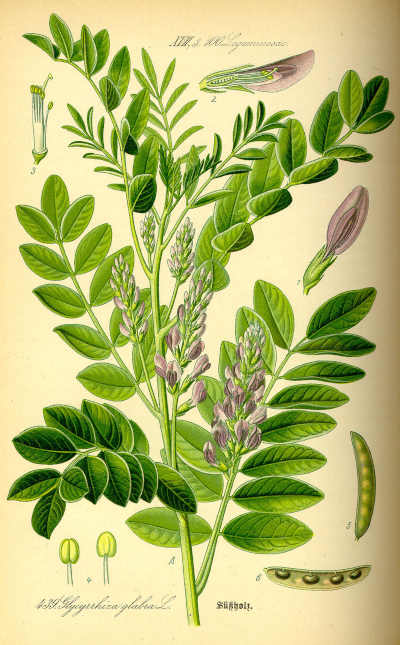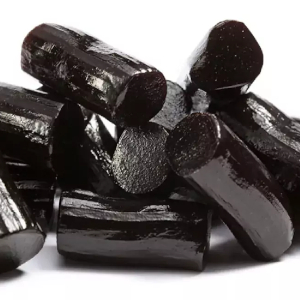Liquorice is taking a hit from the medical community. New science shows that even a little liquorice can raise your blood pressure significantly. And that’s bad news for folks who already have high blood pressure…

Liquorice is a widely popular candy treat. It’s been used as a folk medicine since ancient times. And it’s now implicated as a danger for people prone to high blood pressure. Licorice has long been known to raise BP when consumed in larger amounts. But a new study shows it can be dangerous in very small ‘doses’.
A natural treat – But…
What we’re talking about here is real, original liquorice. The black stuff made from the root of the licorice plant. The red or green commercial candy, sold as ‘twizzlers’ and ‘ropes’, is a completely different, made-up confection.
According to Wikipedia: “The liquorice plant is an herbaceous perennial legume native to Western Asia, North Africa, and Southern Europe. Liquorice is used as a flavouring in confectionery, tobacco, beverages, and pharmaceu-ticals, and is marketed as a dietary supplement.”
More to our point
“Liquorice extracts have been used in herbalism and traditional medicine. Excessive consumption of liquorice […] can lead to undesirable consequences. Clinically, it is suspected that overindulgence in liquorice may manifest as unexplained hypertension, low blood potassium levels (hypokalemia), and muscle weakness in individuals. Consuming liquorice should be avoided during pregnancy.”
What they did
The European Union and the World Health Organization agree that 100 mg of glycyrrhizic acid (the active ingredient in liquorice) per day is a safe dose for most individuals. But many Europeans – notably Swedes and Danes, and especially the Dutch – consume much more than that.
Researchers at Linköping University, in Sweden, wanted to test whether the accepted safe level is actually safe or not.
An abstract of the study report records, “28 women and men aged 18-30 were instructed to eat liquorice, or a control product that did not contain any liquorice, over two periods of time. […] The liquorice contained 100 mg of glycyrrhizic acid; that is, the amount indicated as likely safe for most people to eat daily.
“Participants were randomly assigned to eat either liquorice or the control product for two weeks, take a break for two weeks, and then eat the other variety for two weeks. At the end of each intake period, the researchers measured levels of various hormones, salt balance, and heart workload.”
What they found
“In the study, we found that a daily intake of liquorice containing 100 mg glycyrrhizic acid raised blood pressure in young healthy people. This hasn’t previously been shown for such small amounts of liquorice,” says Peder af Geijerstam, doctoral student at Linköping University and lead author of the study.
The 25 percent of the participants who were most sensitive to the effects of glycyrrhizic acid also showed a slight weight gain, and an increase in a protein associated with heart stress.
The takeaway
“Our results give reason to be more cautious when it comes to recommendations and labelling for food containing liquorice,” says Fredrik Nyström, a professor who supervised the study. It should be noted that very few liquorice packages list the glycyrrhizic acid content of the product.
My take
I can’t help but think of my late step dad when the word ‘liquorice’ is comes up… He loved original black liquorice and always had some in his desk drawer. That was, he said, at least partly because his dad had been a travelling salesman hawking confections to dry goods stores in the 1920s and 30s. Dad’s dad often brought home leftover liquorice samples. The stuff didn’t sell so well on his route.
I hasten at this point to specify that Dad did not die of a heart-related cause. It was cancer that got him. Nevertheless…
As the product of two bloodlines in which heart disease flows strong, I’m glad to know I should shun liquorice to help preserve my aging constitution…
~ Maggie J.

